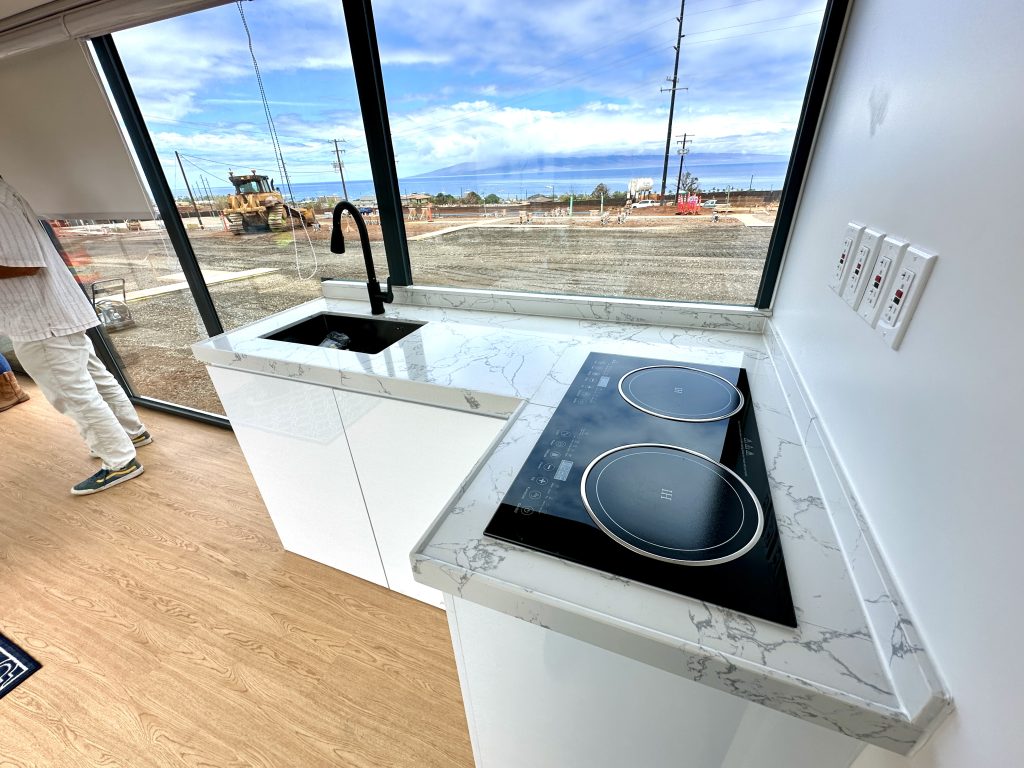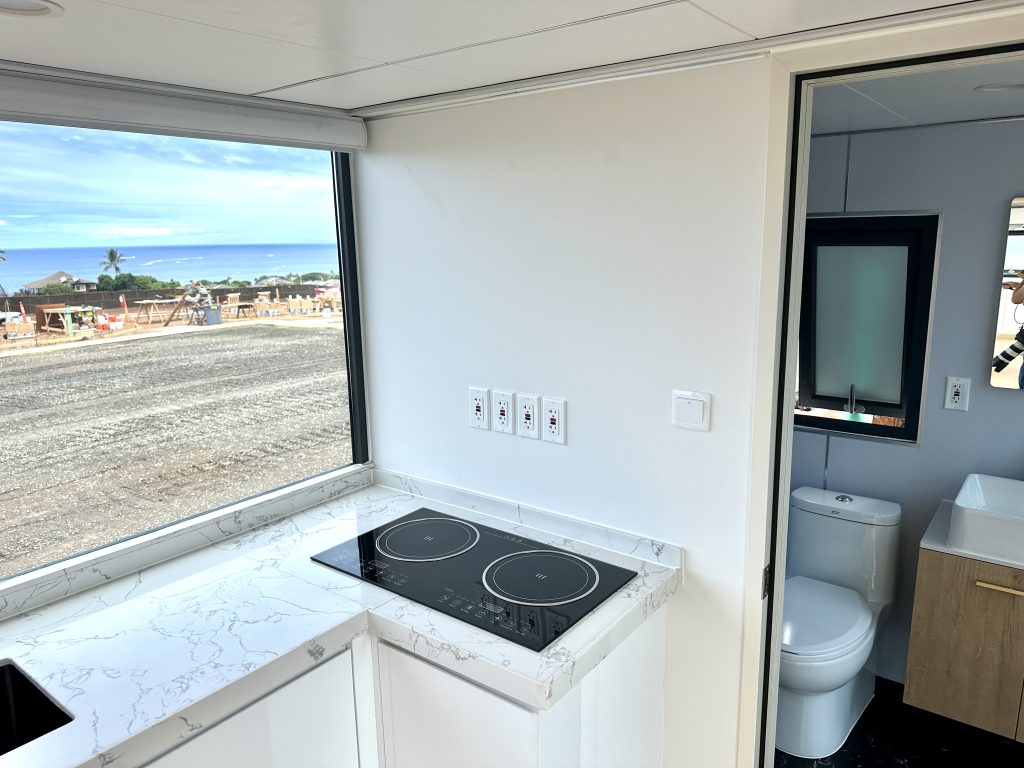Temporary housing projects moving ahead in Lahaina for displaced residents

The first dozen or so Ka Laʻi Ola temporary housing units are nearly ready for occupancy by wildfire survivors in pre-fab, futuristic NanoNest tiny homes with curved ends and floor-to-ceiling transparent walls that take advantage of views of the ocean and West Maui Mountains.
On Friday, a group of reporters and photographers visited the 57-acre site mauka of the fire-damaged Wahikuli Subdivision in Lahaina. Department of Human Services Deputy Director Joseph Campos II said that since the project’s April 30 groundbreaking the site’s 57 acres have been cleared.
The project’s first 270 units are scheduled for completion Dec. 8, and the remaining 180 units in March, he said.
“Ka Laʻi Ola translates as a place for peaceful recovery,” Campos said. “It was the governor’s vision to ensure that the state was able to provide those impacted by the wildfires and not have access to other forms assistance a place for them to recover in a peaceful manner.”
The temporary housing will be studios and one-, two-, and three-bedroom housing units. It will allow wildfire survivors to live in Lahaina, where many have said they want to stay near schools and workplaces.
“It’s designed in a layout that will allow for a sense of community,” he said. Some units are within close proximity to one another, allowing for multigenerational ʻohana to live with kupuna in one unit and other family members in another.
The units are minimalist, about 7.5 feet wide and 38 feet long, with bamboo-style flooring, floor-to-ceiling blinds for privacy and a small area for cooking. A bathroom is located at the end of the unit.
For more privacy, residents might install mirrored film on glass. “We want to make sure that people feel comfortable,” Campos said.
The housing can be occupied for up to five years. The state’s project partners include Goodfellow Bros., CM&D, Maui County, the state Department of Human Services, the Hawai‘i Community Foundation and HomeAid Hawai‘i. The housing is to help displaced wildfire survivors who are ineligible for housing assistance from the Federal Emergency Management Agency.
It’s unusual for public construction projects to take shape quickly, but Campos said it’s been a priority for the governor “to ensure that this was done in a timely fashion.” The contractors and everyone else involved in the project “are moving basically heaven and earth to get this done… in just about 10 months.”
Laksmi Abraham, Maui County director of Communications and Government Affairs, said Maui County is assisting. “We’re doing everything we can to expedite this process,” she said.
“The county and mayor have been extremely accommodating and helpful,” Campos said.
Nearby, reporters also viewed progress at the 169-unit Kilohana temporary housing project site.
Col. Eric Swenson, Maui Wildfires Recovery Field Office commander with the US Army Corps of Engineers, said that, as of Friday, about 70% of work on infrastructure installation has been completed, including electric utilities, water and sewage systems. The project will connect with Maui County’s wastewater system through construction of a sewer line on Fleming Road, he said.

Phase 1 work on infrastructure is scheduled top be completed Oct. 28 on the project’s 34 acres mauka of a cane haul road near Wahikuli Road. Work began with 65 days of blasting blue rock, starting in May.
“Thousands and thousands of homes were lost to this fire,” Swenson said. “And we need to get those people back into stable housing so that they can rebuild their lives and rebuild their town. So this is one small bite out of a very large problem.”
The US Army Corps’ work is paving the way for installation of modular homes. The work is funded by the Federal Emergency Management Agency and the state of Hawai‘i.
The US Army Corps also has led the removal of ash and debris from residential and commercial properties in Lahaina Town and handled construction of a temporary school site for Kamehameha III Elementary School makai of Kapalua Airport. Work on the school site was sub-contracted to Pono Aina Management, a Native Hawaiian organization.





















